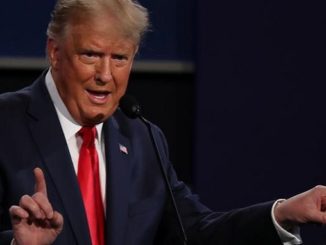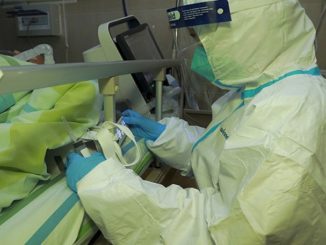
President Donald Trump plans to keep U.S. troops in Iraq to monitor and maintain pressure on Iran, committing to an American military presence in the region’s war zones even as he moves to withdraw forces from Syria and Afghanistan, the New York Times reports.
“I want to be able to watch Iran,” Trump said in an interview aired Sunday on CBS’s “Face the Nation.” “We’re going to keep watching and we’re going to keep seeing and if there’s trouble, if somebody is looking to do nuclear weapons or other things, we’re going to know it before they do.”
His comments come as Washington has quietly been negotiating with Iraq for weeks to allow perhaps hundreds of American commandos and support troops now operating in Syria to shift to bases in Iraq and strike the Islamic State from there.
According to Reuters, Iraqi President Barham Salih said on Monday that President Trump did not ask Iraq’s permission for U.S. troops stationed there to “watch Iran.”
“Don’t overburden Iraq with your own issues,” Salih said. “The U.S. is a major power … but do not pursue your own policy priorities, we live here.”
“It is of fundamental interest for Iraq to have good relations with Iran” and other neighboring countries, the Iraqi President said.
Military leaders are seeking to maintain pressure on the militant group as the President fundamentally reorders policy toward Syria and toward Afghanistan, where peace talks with the Taliban are underway, the Times adds.
But senior American officers and diplomats said Trump’s comments could undercut the delicate negotiations in Iraq by inflaming fears among the Iraqis that the moves would be a guise to check Iran, potentially straining ties with Baghdad and weakening the ability of the United States to respond to Islamic State remnants in Syria.
To maintain a military mission in Syria despite Trump’s order to withdraw troops from the country, a plan has gained momentum within the Pentagon to use small teams of Special Operations forces to strike the Islamic State, as well as to continue airstrikes and resupplying allied Kurdish fighters.
Senior American officers recently visited several Iraqi bases, including Erbil and Al Asad Air Base as well as smaller ones closer to the Syrian border, to determine if existing American operations there could be expanded with troops shifting in from Syria, two United States officials said. Another American officer visited at least one Iraqi base near the Iranian border, a Kurdish politician said.
The Pentagon says it is in the process of complying with Trump’s withdrawal order, after commanders persuaded him to reverse his initial demand to pull out in 30 days in favor of a schedule of about four months. “We are on a deliberate, coordinated, disciplined withdrawal,” Patrick M. Shanahan, the acting defense secretary, told reporters last week.
The American military has started withdrawing some equipment, but not yet troops, officials said on Sunday. The number of American troops in Syria has actually increased in recent weeks to more than 3,000 – a standard practice to bring in additional security and logistics troops temporarily to help protect and carry out the process of pulling out – three Defense Department officials told the New York Times.




Be the first to comment